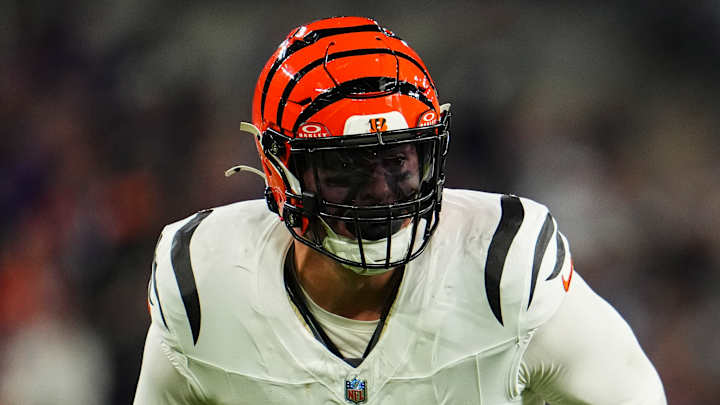Trey Hendrickson is talented, but Myles Garrett is on a different level.
Trey Hendrickson | Cooper Neill/GettyImages Let’s establish two key points from the start. If the Washington Commanders were to trade for Cincinnati Bengals’ All-Pro defensive end Trey Hendrickson, he would immediately become the best pass rusher they’ve had since Ryan Kerrigan, who never came close to matching Hendrickson’s 35 sacks over the last two seasons.
The second point is that Hendrickson doesn’t quite measure up to Myles Garrett.
The “go all in, no matter what it takes” approach that might apply to a cquiring Garrett is not one the Commanders should adopt for Hendrickson, even though he could make a strong impact.
When the San Francisco 49ers were in a tight spot financially, Adam Peters made a great move by trading for wide receiver Deebo Samuel. The Bengals find themselves in a similar situation. Their priority is retaining core players like Joe Burrow, Ja’Marr Chase, and Tee Higgins, which leaves little space for Hendrickson.
Timing is crucial here.
Bengals general manager Duke Tobin had been publicly hopeful of extending Hendrickson, but the moment Maxx Crosby’s contract with the Raiders was announced, Tobin realized that the market for elite defensive ends had shifted. Cincinnati now faces the reality that they might not meet Hendrickson’s financial demands.
This development is vital for the Commanders or any team looking to trade for Hendrickson. Peters is unlikely to give up the draft capital required for a trade if he views Hendrickson as a short-term solution. That’s not how he operates.
Peters would want to negotiate a contract extension with Hendrickson to keep him in Washington through 2026 or 2027. Fortunately, Peters has been exceptionally smart during his tenure in D.C., and he’s unlikely to make a poor decision.
The Commanders face a tough choice between Trey Hendrickson and Myles Garrett this offseason. Washington isn’t in a strong position when it comes to draft capital.
Paul Dehner Jr. from The Athletic recently outlined what similar players to Hendrickson have cost in recent years. Only one top-tier edge rusher — Bradley Chubb in 2022 — was traded for a first-round pick. That first-rounder was the 29th pick — the same pick Washington holds this year.
At the time, Chubb was four years younger than Hendrickson. Most top pass rushers, from established veterans like Von Miller and Khalil Mack to younger stars like Brian Burns and Washington’s own Montez Sweat, have been traded for second-round picks.
Given the Commanders’ strong performance in 2024, their second-round pick doesn’t come until pick No. 61. Unless the market shifts dramatically, that won’t be enough to land Hendrickson. Therefore, Peters may need to be creative.
He could consider trading away his first-round pick along with other assets to acquire Hendrickson and potentially some late-round picks this year. This trade scenario, suggested by Ben Standig from The Athletic, makes sense.
Alternatively, Peters could trade back from the first round to gain more draft capital and then use that to secure Hendrickson while replenishing his draft stock.
The Commanders have emphasized that building through the draft under Peters is their preferred approach. This is how most successful organizations operate, as it’s more efficient and cost-effective than relying on expensive free-agent acquisitions.
Trading away a first-round pick contradicts this philosophy. During his time with the 49ers, Peters saw firsthand how John Lynch avoided giving up a first-round pick for a young star like Christian McCaffrey, opting instead for multiple high picks.
While the recent acquisition of Samuel might not have cost much, it did further reduce Washington’s draft resources. The team currently has six picks, only three of which are in the first 200. A trade for Hendrickson would deplete those resources even further, potentially limiting their ability to secure additional picks.
Then there’s the matter of salary.
Crosby’s contract is worth three years, $106.5 million, with the majority of it guaranteed. This works out to around $35 million per season, nearly $10 million more than Washington’s highest-paid player, Daron Payne.
Would Peters be willing to disrupt the team’s salary structure, particularly when it would mean over $50 million invested in two defensive linemen?
While Hendrickson likely won’t command Crosby-like money — given Crosby’s age and importance to the Raiders — Hendrickson’s representatives will still seek a deal close to that range, and he has no obligation to agree to an extension.
Financially, despite the appeal, it doesn’t make much sense.

Leave a Reply